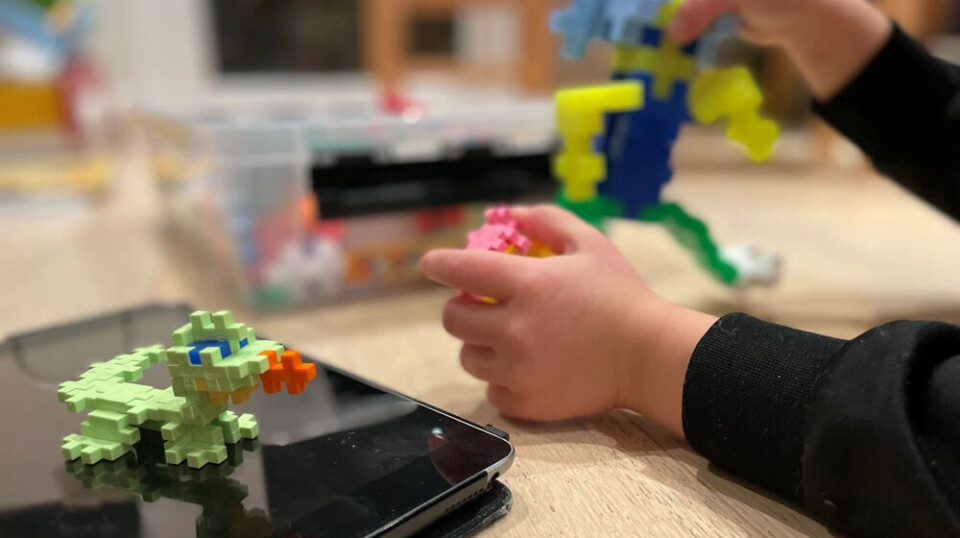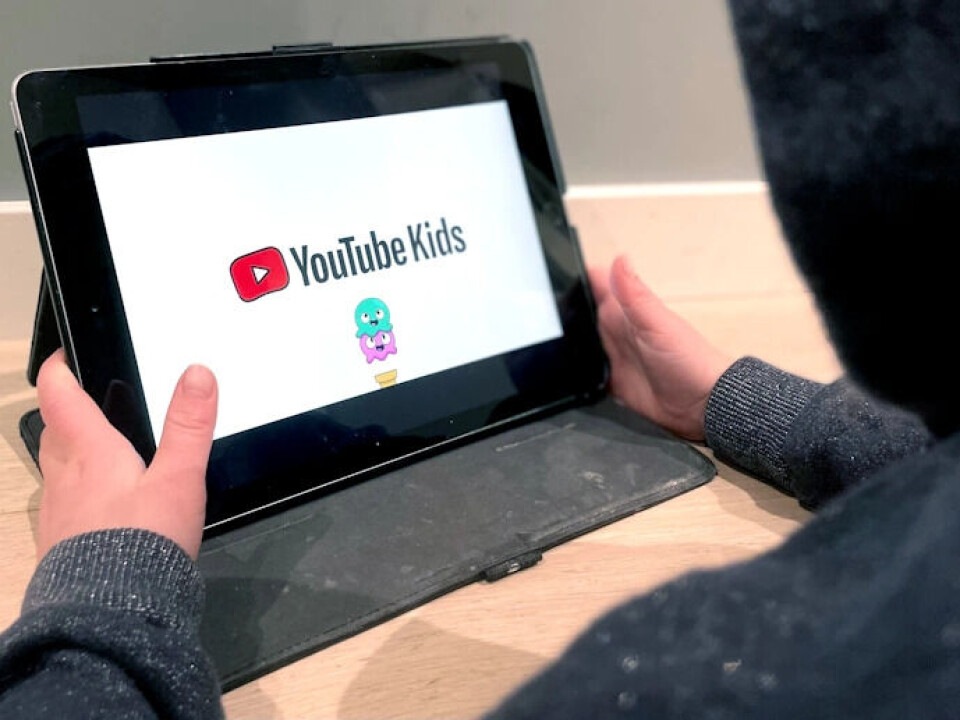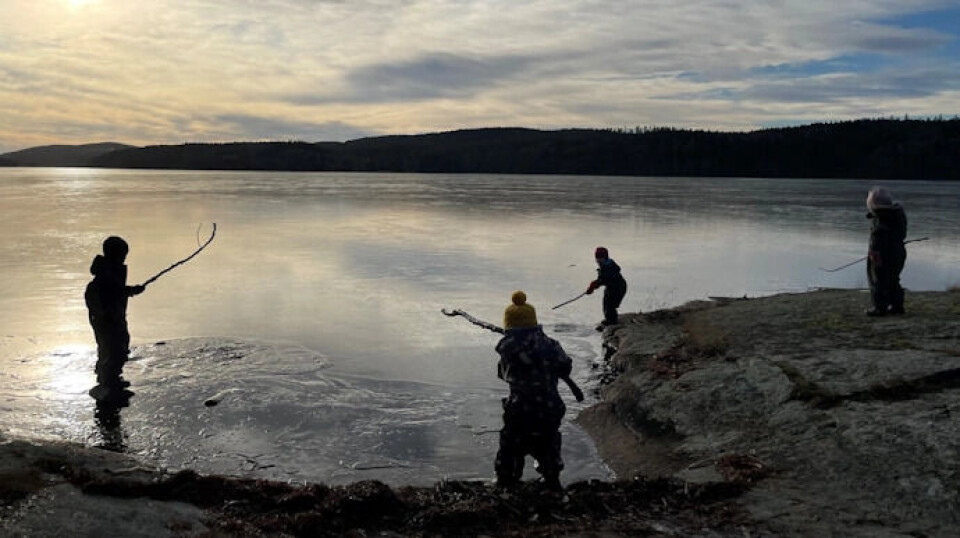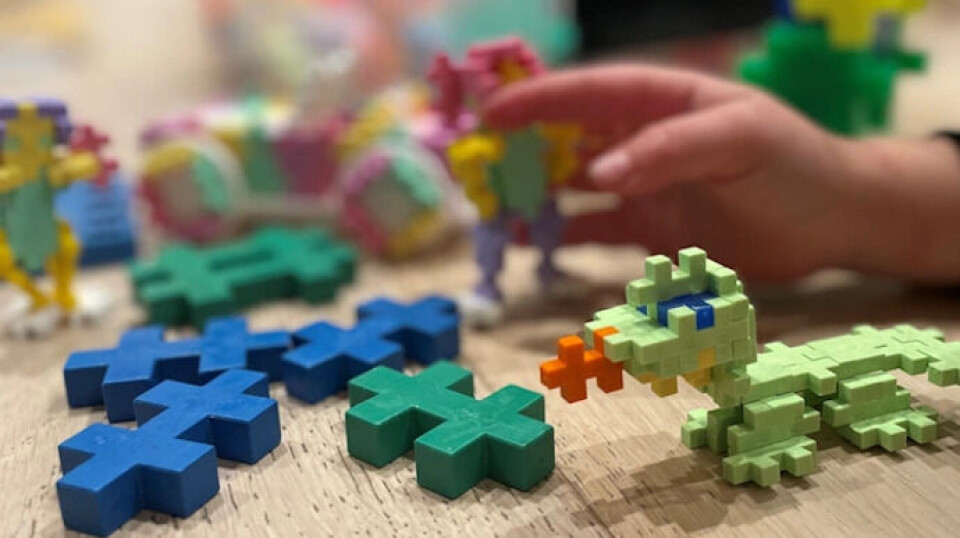THIS CONTENT IS BROUGHT TO YOU BY University of Oslo - read more

Your kids’ screen time may be more creative than you think
Minecraft and LEGO bricks, pinecones and Super Mario stars. Maybe it’s just us grown-ups making a false distinction between screen play and other kinds of play?
“When people talk about screen time, the implication is that this time is distinct from the time when kids are not using a screen. But for young children, that’s not always the case,” says Kenneth Pettersen.
Originally a preschool teacher, Pettersen has in recent years conducted research at the Univeristy of Oslo's Department of Education.

In his PhD research project, Pettersen did a deep dive into the play of a group of three- to six-year-olds, concentrating on three boys who enjoyed playing video games. He observed these youngsters both in preschool and home settings for a total of 64 days over an 18-month period.
“I soon noticed that the digital worlds ordinarily associated with YouTube and the Minecraft video game manifested in what appeared to be all-analogue play. For example, the children were using concepts, game logic, and characters from Minecraft while building with physical construction toys at preschool,” says Pettersen.
He explains that this was such a consistent feature of the children’s play that it did not always make sense to distinguish between analogue and digital play.
Screen play and other types of play
Over the last years, we have seen debates about children’s screen time in several countries. In 2019, the World Health Organization – for the first time in history – published guidelines addressing screen time for children under the age of five.
In Norway, parents have spoken out against screen use in schools, and the Norwegian Government appointed a Screen Use Committee for schools and preschools in 2023.
Pettersen is calling for a more nuanced debate on screen time among children. By examining screen play beyond the digital device, he believes many would come to view certain aspects of screen time differently.
He notes that YouTube usage may appear very passive and sedentary.
"However, if you compare it with other types of play over several days, you’ll likely find that children are incorporating it creatively in other kinds of play, including where there's nothing digital involved,” he says.

He does, however, point out that not all screen play influence is positive. In his research, Pettersen found situations where game logic constrained play and was destructive.
“Any playtime has upsides and downsides, and the same goes for this type of play. My point is that instead of being blinkered about screen time, we need to be sensitive and curious about play linked to on-screen experiences,” he says.
Pettersen advises investigating whether recurring patterns are positive or negative, and reinforce the positive aspects.
Emotions and excitement
The researcher observed that five-year-olds might jump up and down on the sofa, scream in ecstasy, and hurl themselves backwards while watching YouTube. He was curious about what made them react like this.
What emotions are involved? And how do they affect relationships between the kids?
Previous studies on children’s play have largely focused on what they talk about when they play, including how they use language to negotiate amongst themselves about what kind of play they are engaged in.
Pettersen took a different approach. He wanted to explore what cannot be easily captured with language: The children's emotions and their excitement.
“To observe that, you have to study them more in-depth,” he says.
Risky play is not confined to precarious situations
Pettersen discovered that the bond between children was strengthened when they they engaged in high-stakes play and took risks in video games.
In other words, risky play is not limited to climbing trees or venturing out onto thin ice.

“The children were also observed making unsafe choices on purpose, for the thrill of it, and to achieve a strong peer-bonding experience during game play. They might, for example, strip the armour off a Minecraft character and have them wander around in the middle of the night,” the researcher says.
By doing so, they were deliberately tempting fate.
“They called this ‘being a noob’,” Pettersen says.

This intense thrill-seeking recurred in their physical play: The children might be noobs (novices) in the woods, just as well as in front of a screen.
The thrill of being a noob was the most important thing whether on-screen or off-screen.
Super Mario can also be ‘the dead mouse’
Preschool staff tend to focus on letting the kids’ spontaneous impulses shape the day’s events. They refer to it as ‘dead mouse pedagogy’.
This expression refers to an example of preschoolers who discover a dead mouse while en route to an outdoor destination.
The children’s questions and excitement about the mouse present a golden opportunity for stimulating learning and wonderment, at least if the adults are willing to change their plans and take a moment to reflect.
“Super Mario could also be the dead mouse if the adults are open to allowing that,” Pettersen says.

He encourages preschool educators to be just as enthusiastic when children show interest in things originally seen on a screen.
“Because these things can also stimulate exploration, learning, and creativity, and can spill over into other types of play,” he says.
For the five-year-olds in the study, pinecones in the woods, for example, were Super Mario stars, and the Plus-Plus pieces on the floor at home were a live video-game dragon.
Might a gaming universe be a new Billy Goats Gruff?
Many preschool institutions in Norway have tended to create physical play zones themed on classic Norwegian children’s fairytales like Three Billy Goats Gruff or Thorbjørn Egner's In the Forest of Huckybucky.
But perhaps they have not done the same with more recent on-screen universes?

At the preschool Pettersen observed, there was a moment when the adults made physical play zones based on the Super Mario universe for the kidsto play in.
Pettersen argues that embracing this concept could potentially cater to the diverse interests of the kids at preschool, not just those who are brought to the theatre in their free time.
Reference:
Pettersen, K. More-than-human and more-than-digital collecting among young children in Norway, Children's Geographies, 2024. DOI: 10.1080/14733285.2024.2302105
Pettersen, K. & Ehret, C. Refrains of Friendship in Young Children's Postdigital Play, Journal of Literary Research, 2024. DOI: 10.1177/1086296X241226479
Pettersen et al. Playing Minecraft: Young children's postdigital play, Journal of Early Childhood Literacy, 2022. DOI: 10.1177/14687984221118977
Pettersen et al. Rethinking boundaries: Sociomaterial perspectives on digital technologies and early childhoods. In Kumpalainen et al. (Eds.) Nordic Childhoods in the Digital Age, Routledge, 2022. DOI: 10.4324/9781003145257

This content is paid for and presented by the University of Oslo
This content is created by the University of Oslo's communication staff, who use this platform to communicate science and share results from research with the public. The University of Oslo is one of more than 80 owners of ScienceNorway.no. Read more here.
More content from the University of Oslo:
-
A researcher has listened to 480 versions of Hitler's favourite music. This is what he found
-
Researcher: "AI weakens our judgement"
-
New, worrying trend among incels, according to researcher
-
Ship’s logs have shaped our understanding of the sea
-
New study: The dilemma of copyright in the Global South
-
How your lifestyle affects your risk of bowel cancer




































